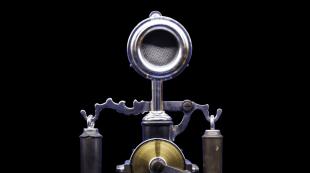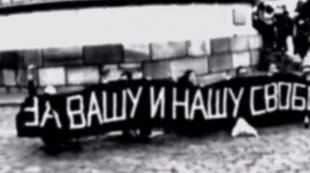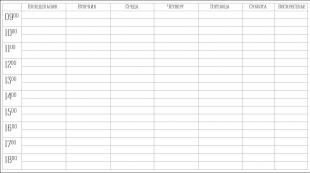What astronauts say before launch. Superstitions and rituals of astronauts. Empty the bladder
Oddly enough it looks, but astronautics - the area where the most sophisticated and latest technologies reign - is also an area associated with a lot of strict traditions and even superstitions. Everyone going into space must perform a lot of complex rituals, otherwise the flight will turn into a disaster. Amulets, songs and worship of the spirit of Gagarin - all this is included in an indispensable set of actions that a future cosmonaut must perform.
PM revision

Bad fate: the explosion of the R-16 rocket on October 24, 1960 led to the death of 72 people (according to official data)

Most important: irrigate the right rear wheel of the bus

The best patron of crews - the spirit of the first astronaut

Dobrovolsky, Volkov, Patsaev: evil fate and the death of the Soyuz-11 crew caused a mass of superstitions


The Plesetsk cosmodrome has its own superstition: write on the rocket before launch female name Tanya

However, if you think about it, all this is not so unexpected: the laws of psychology are almost as immutable as physical principles. So, it is known that superstitions are especially great in those areas of activity where a person experiences especially high level stress - for example, speaking in public or working at risk to your life. The latter is abundant even in modern cosmonautics: out of 483 people who have been in space, according to official data, 18 have died. Thus, the mortality rate is 3.74% - this makes astronautics one of the most dangerous professions in the world. For example, the mortality rate among the American military during the war in Iraq (2003-2006) was 0.39%, and in Vietnam (1966-1972) - 2.18%.
Given this danger, it is not surprising that astronauts feel calmer and psychologically comfortable, actively “defending themselves” from mortal danger with the help of all kinds of rituals, talismans and amulets. This is a natural need of our psyche - in case of danger, turn to a force "capable" of deflecting the blows of fate.
Another reason for the active spread of superstitions and rituals is what is called the "corporate spirit". Astronauts, of course, belong to an elite closed professional group and, therefore, psychologically need signs and symbols that would separate them from other "mortals" and distinguish them from them. This function is partially assumed by the joint performance of seemingly meaningless rituals. Their members strengthen the internal cohesion of the team, emphasizing their uniqueness.
The most interesting (and most numerous) superstitions exist in Russian cosmonautics. Some of them date back to our days, some originate from the Soviet era and the first manned space flights, and some are even based on very old Orthodox beliefs.
On board the orbital station, the crew is also greeted traditionally - with bread and salt. Well, upon returning to Earth, the crew again performs a lot of rituals: they sign on the soot-covered shell of the descent capsule and inside the cabin of the helicopter that picked them up. A specially prepared bottle of vodka is also drunk, on which all the crew members signed before the start. On the same alley in Baikonur, they are already planting in their own tree, which will weave their voices to help the next crews. And everything ends again in Star City, paying tribute to Yuri Gagarin, who provided such significant support to the travelers.
Astronauts are considered perhaps the most superstitious people on the planet. Traditionally, they take a wormwood twig with them on the flight, as it retains its scent longer than other plants and reminds of the Earth, and it is customary to see the crew off to the launch site to the song "Earth in the window".
Black Mondays and Unlucky Dates
The beginning of "space superstitions" was laid by the famous General Designer Sergei Korolev. It is reliably known that Korolev did not like starts on Mondays and always rescheduled the date if it fell on Monday. Why - and remained a big mystery. Nevertheless, Korolev defended his point of view at the very top, because of this, serious conflicts even flared up. Spaceships did not fly in the Soviet Union on Mondays - the first three years of the space age. Then they began to fly, which led to 11 accidents. Since 1965, Monday has been considered in Soviet and now Russian cosmonautics almost as an official "non-starting" day.
There are also "unlucky dates" in Baikonur. The start is never scheduled for October 24th. On this day, no serious work is carried out at the launch sites at all. On October 24, 1960, an explosion of an R-16 ICBM carrier rocket took place at the Baikonur launch pad, killing dozens of people. On October 24, 1963, an R-9A rocket flashed on the launch pad. Eight people were burned down.
Happy operator
Another superstition of the famous designer was the "happy" operator, who always pressed the "start" button on command, Captain Smirnitsky. Not a single rocket launch was complete without Smirnitsky. Even when he had eczema, he still pressed the button, because Korolev believed that the man had a "light hand".
The same Korolev strictly forbade one of his designers to appear on the launch pad during the launch (once during his watch some kind of trouble happened) and personally made sure that he did not even show his nose.
Autographs
Astronauts never sign autographs before their first flight. Some generally avoid signing autographs in black ink. However, the entire crew must sign a bottle of vodka, which is drunk on the ground, in the Kazakh steppe, after a successful flight.
Astronauts are happy to leave autographs on the door of the hotel room, where they spend the night before the start. It is strictly forbidden to paint over or wash off these autographs.
Woman on board
They say that because of superstitions, they were afraid to send Valentina Tereshkova into space - everyone remembered the old maritime omen at the expense of a woman on a ship. But the Soviet leadership did not differ in superstition. In 1963, on the eve of an international conference of women in Moscow, it was a woman who was to fly into space.
Yourself with a mustache
For a long time, the baleen were not allowed into space. During the flight of the mustachioed Viktor Zholobov, there were problems, and the program had to be terminated ahead of schedule.
Other astronaut oddities
The cosmonauts will never call the launch of any spacecraft "the last": for example, "the last launch to the Mir station ..." they would prefer to call the "extreme", "final". Also, astronauts never say goodbye to those who see them off.
At the cosmodrome in Plesetsk, before the launch of the carrier rocket, they must write "Tanya" on it. They say that this name was brought out on the first rocket by an officer in love with a certain Tanya. Once, when they forgot to display the happy name on the hull, the rocket exploded before launch.
Before the start, astronauts must watch the "White Sun of the Desert".
It is considered a rule for astronauts to pee on the wheel of the bus that carries them to the launch pad. After that, the spacesuit is tightly fastened to them, and the next opportunity to relieve themselves will be presented only a few hours later, already at open space... The ritual seems to have gone from the time of Yuri Gagarin and is still supported. Others consider the ancestor of this tradition to be the general designer Sergei Korolev, who always irrigated the rocket before launching.
Oddly enough it looks, but astronautics - the area where the most sophisticated and latest technologies reign - is also an area associated with a lot of strict traditions and even superstitions. Everyone going into space must perform a lot of complex rituals, otherwise the flight will turn into a disaster.
Amulets, songs and worship of the spirit of Gagarin - all this is included in an indispensable set of actions that a future cosmonaut must perform.
However, if you think about it, all this is not so unexpected: the laws of psychology are almost as immutable as physical principles. For example, it is known that superstitions are especially great in those areas of activity where they experience particularly high stress - for example, speaking in public or working at a risk to their lives. The latter is abundant even in modern cosmonautics: out of 483 people who have been in space, according to official data, 18 have died. Thus, the mortality rate is 3.74% - this makes astronautics one of the most professions in the world. For example, the mortality rate among the American military during the war in Iraq (2003-2006) was 0.39%, and in Vietnam (1966-1972) - 2.18%.

Given this danger, it is not surprising that astronauts feel calmer and psychologically comfortable, actively “defending themselves” from mortal danger with the help of all kinds of rituals, talismans and amulets. This is the need of our psyche - in case of danger, turn to a force "capable" of deflecting the blows of fate.
Another reason for active superstition and ritual is what is called the "corporate spirit". Astronauts, of course, belong to an elite closed professional group and, therefore, psychologically need signs and symbols that would separate them from other "mortals" and distinguish them from them. This function is partially assumed by the joint performance of seemingly meaningless rituals. Their members strengthen the internal cohesion of the team, emphasizing their uniqueness.

The most interesting (and most numerous) superstitions exist in Russian cosmonautics. Some of them date back to our days, some originate from the Soviet era and the first manned space flights, and some are even based on very old Orthodox beliefs.
A number of traditions and superstitions originate from Sergei Korolev, some of which have already receded into the past, while others exist to this day. So, the first general designer considered Mondays unlucky, and never scheduled launches for this week. For some time, the mustachioed were not allowed into space: in 1976, during the flight, the mustachioed cosmonaut Vitaly Zholobov felt so bad that the mission had to be canceled ahead of schedule. Today this tradition is a thing of the past.

Some superstitions in Russian cosmonautics are borrowed from the Navy. Historically, astronauts, as a rule, were recruited from naval pilots - and some of the traditions cannot be called anything other than "naval". So, for a long time it was believed that a woman on board was an unkind sign not only for sea ship but also for space. It's funny, but after April 19, 2008, when the Soyuz TMA-11 descent capsule made a “hard” landing along a ballistic trajectory and 400 km from its destination, it had a crew of 2 women and 1 man. Speaking about this, the head of Roscosmos Anatoly Perminov said, in particular: "Of course, in the future we will work to ensure that the number of women on board does not exceed the number of men."

Today the ritual preceding sending into orbit begins in the Star City near Moscow, where the cosmonauts underwent long training. The future crew visits the memorial dedicated to the memory of Yuri Gagarin, as well as the first cosmonauts who died during space missions - Vladimir Komarov (the flight of his Soyuz-1 spacecraft was generally full of failures, which is why the flight was terminated ahead of schedule; the parachute system worked), as well as Georgy Dobrovolsky, Viktor Patsaev and Vladislav Volkov (when returning from the Soyuz-11 spacecraft, all three died due to the capsule depressurization). Here astronauts always leave flowers - always red carnations.

Then they go to Yuri Gagarin's study, which is carefully preserved in the form in which the first cosmonaut left it, and enter their words in the visitors' book. According to rumors, they also mentally appeal to the spirit of Gagarin, asking him for permission to fly. This ghost will accompany them in the future - we will meet with him again.

Arriving at Baikonur, the team traditionally checks into the Cosmonaut Hotel, which over the years has become so overgrown with countless superstitions and legends that if in 11 years (as planned) manned flights start from the new Vostochny cosmodrome, the hotel may have to be moved there. In front of her building, there is an alley of trees, each of which was planted by an astronaut who returned safely from orbit. The future space crew will definitely take a walk along the alley, thereby, as it were, appealing to the souls of the astronauts and taking on a piece of their luck.
The closer the launch, the more sophisticated the rituals become, and the level of superstition increases. The roll-out of the Soyuz rocket to the launch site takes place 48 hours before this moment. Technicians watching the passage of a huge rocket on a special train put coins on the rails - also for luck. But the ship's crew itself is strictly forbidden to observe this process - like a groom to see a bride in a festive dress before the wedding - otherwise they will fail. But future cosmonauts are obliged to have their hair cut. This, in turn, resembles a monastic tonsure: thereby the astronauts renounce everything earthly. From this moment on, their life is only in space.

There is never, never a launch scheduled for October 24th. This one has been considered unsuccessful since the very first years of Soviet cosmonautics. In 1960, at Baikonur, an experimental R-16 rocket exploded right on the launch pad, 72 killed (according to other sources - 125), including the commander of the Strategic Missile Forces Marshal Mitrofan Nedelin. Three years later, it was on this very day that a fire broke out in one of the mines where the R-9 combat missile was located; 7 people died. Since then, this date has been a “dead day” for Russian cosmonautics, no launches have been made.

Well, today, the day before the start, the team receives the blessing of an Orthodox priest and is sprinkled with holy water. The hotel must show "The White Sun of the Desert", and the cosmonauts must be present at the session. This tradition is also associated with the tragic death of the Soyuz-11 crew: everyone waited for the next flight with bated breath, and when it went well, they took note of some of the actions that “brought good luck” to the crew. In particular, it turned out that it was the "White Sun of the Desert" that the cosmonauts watched before the launch, and this has become a tradition. Some time ago, before the start, the crew even passed a humorous quiz on the knowledge of this film. The questions in it, however, are designed exclusively for experts - for example, "What was the name of Abdullah's third wife?"
Finally, the most important day comes. At breakfast, the cosmonauts take a sip of champagne (the duplicate composition drinks 100 grams of technical alcohol) and leave autographs on the doors of their rooms. Their departure is accompanied by a song by the once super popular group "Earthlings"; the song itself, however, is still popular: "Grass at home."

Everyone is loaded onto a bus, decorated with horseshoes for good luck, and on the way to the launch site again listen to the "spirit of Gagarin", whether he allows them to go into space. And so, they arrive - getting off the bus, the whole team repeats the famous action performed before the flight by Gagarin himself: irrigating the rear right wheel. It is understandable that women, if any in the carriage, are exempt from the obligation to perform this ritual, although it is said that some of the most superstitious of them prepared a jar of urine in advance and sprinkled it from it. Some women - like the first female tourist in orbit, Anouseh Ansari - did it "mentally." And the first Malaysian cosmonaut Sheikh Muszaphar Shukor recalled that it took him minutes to unfasten - and the same amount to fasten, but at the same time he "really liked" the very performance of the tradition.
And so the crew commander gives a report to a suitable official present at the cosmodrome. He announces his readiness to carry out the mission and is given the go-ahead to board. At the same time, everyone needs to repeat Gagarin's famous gesture - to wave his hand. In response, they do not say goodbye to them: a bad omen.

The duplicate team, which in the meantime was training on the ship, frees up space and goes out to the journalists. About half an hour before the start, and the understudies must fulfill their ritual duties: to drink a little to success with the journalists present. They say that twice the cosmonauts did not observe this tradition, and the launches were unsuccessful.
According to legend, this tradition was founded not by cosmonauts, but by journalists - the correspondent of the Leninskaya Smena newspaper Georgy Loria and the head of the press center of Baikonur Yaroslav Nechesa. Attending the launch to the Mir station in March 1992, they froze through and went to “warm up” to the buffet, where the backup crews of the Soyuz TM-14, Anatoly Soloviev and Sergei Avdeev, unexpectedly went out. They did not refuse the offer to drink, and when they all drank, Loria, glancing at his watch, remarked: "There is still half an hour before the start."

At the Plesetsk cosmodrome, before the launch of the carrier rocket, they must write "Tanya" on it - they say that this name was brought out on the first rocket by an officer in love with a certain Tanya. Once they forgot to write the cherished - the rocket exploded during the launch.
Well, in the meantime, the main crew starts landing, and the cosmonauts are left with the last thing: a talisman. Each team has its own, and his choice is the prerogative of the captain. As a rule, it is a small toy, fixed on a cable, and its common name is "Boris". Boris is mounted in the command compartment so that it can be seen by cameras tracking the crew during launch and orbit. Boris is a hybrid of superstition and practicality. It serves not only as a talisman for the team, but also as a simple "beacon" for ground services, showing whether the ship has reached a height where the earth's gravity is no longer effective: here the toy stops hanging and begins to "levitate".

On board the orbital station, the crew is also greeted traditionally - with bread and salt. Well, and upon returning to Earth, the crew again performs a lot of rituals: they sign on the soot-covered shell of the descent capsule and inside the cabin of the helicopter that picked them up. A specially prepared bottle of vodka is also drunk, on which all the crew members signed before the start. On the same alley in Baikonur, they are already planting in their own tree, which will weave their voices to help the next crews. And everything ends again in Star City, paying tribute to Yuri Gagarin, who provided such significant support to the travelers.
Extracurricular activity: Intellectual game "Space Flight" dedicated to the 80th anniversary of space of the first cosmonaut Yury A. Gagarin.
Designed by: Sh.D. Bisembekova
Class: 6 class "B".
Lesson type: non-standard lesson - intellectual game.
The duration of the lesson is 45 minutes.
Target:
Formation of a scientific worldview.
The development of cognitive motivation.
Tasks:
Improving intellectual skills, broadening the horizons, erudition of students; development of intelligence, thinking and speech, attention, intelligence, curiosity, creative abilities of students.
Education of mutual aid and mutual assistance; the ability to make decisions in a non-standard situation in a limited time.
Instilling interestto the history of space exploration and conquest.
Continuation of the formation of value attitudes towards the achievements of domestic science.
Computer techologies: Power Point, multimedia
Used pedagogical technologies and methods: ICT: lesson progress presentation, elements of health saving technology. Security question methods, video method, explanatory and illustrative method.
PROCESS OF OUT-OF-CLASS EVENT
I. Org. moment
Introductory speech of the teacher
Teacher:
Everyone knows the name of the first cosmonaut of our country, Yuri Alekseevich Gagarin. He turned 80 this year, but he is no longer with us. He still lives in our memory forever young and smiling! He is still the idol of millions, his smile is still inimitable, and the word "Let's go!" known all over the world, as well as the date April 12, 1961.
I suggest you watch a unique video, in which, in particular, you can hear the last pre-flight negotiations between Gagarin and Korolev. "I am dawn alone, I wish you a good flight!" To which the famous phrase “Let's go!” Followed.
I suggest watching a unique video.
b) Watching the video "You know what kind of guy he was!" (2-3 minutes)
Now we are going to make an exciting space journey. Our game is a kind of congratulations on this outstanding event.
Today 2 ships will take off for the flight, with two magnificent crews on board. During the game we will find out who knows best the history of space exploration. A lot will depend on your organization, attention, speed.
Dear participants, space experts! Before the game, we asked to choose 2 teams, the name of which we came up with ourselves, these are the teams: "Cedar" and "Seagull".
The rules of the game are simple: on the presentation slide, the team captain chooses the number of the letter with the question, and the team answers it after exactly 20 seconds of discussion. Teams are entitled to a question in turn. After the discussion, either the team captain or the player who is confident in the correctness of his answer has the right to answer. If the answer is incorrect, then the opposing team, which raised the first hand, gets the right to earn a point. The team with the most points wins. Do the connoisseurs understand the rules of the game? The progress of today's game will be monitored (presentation by the jury).
II ... So we start the game. The first question chooses team …
Questions:
Story:
10. How long did the first space flight last?(108 minutes.)
20. Name an outstanding rocket designer whose name is associated with our first victories in space exploration?(Academician S.P. Korolev.)
30. Which of the scientists of our country is the founder of cosmonautics?
(K.E. Tsiolkovsky.)
40. Namethe name of the scientist who invented the telescope.
(Galileo)
50. What date was the beginning of the space age?(October 4, 1957).
10. What is the name of the scientist-inventor of the space rocket? (K.E. Tsiolkovsky)
20. How many times has T. Musabaev been in space? (3 times: 1994, 1998, 2001).
30. What does the name "Baikonur" mean? (translated from the Kazakh language “Baykogyr” means a rich valley).
40.
Who was the first to suggest that the Earth has the shape of a ball? (Aristotle
)
50. Cosmonautics theorist K.E. Tsiolkovsky was by profession ... (Teacher)
Space:
10. A group of stars is called ...(Constellation )
20. What color are the coldest stars? (Red)
30. Is the planet Earth about 4.6 billion years old? (Yes)
40. How many planets are in Solar system? (8)
50. To what stars does our Sun belong?(Yellow dwarf.)
10.What does the word "cosmonautics" mean (Navigation)
20.
How many satellites does the Earth have?(One
)
30. In the name of which planet is the note hidden? Draw it on the staff.
(The note is hidden in the name of our planet: Earth.)
40. What does the word “cosmos” mean in Greek? (Order, Universe)
50. What is the brightest (after the Sun) star in our sky? (Sirius)
Astronauts:
10. Who traveled to space before man, and what were the names of the first messengers?(Dogs: Laika, Squirrel, Arrow, Bee, Fly, Asterisk, Nigella, Coal, Breeze - 9.)
20. Which of the female astronauts in 1963 visited space for the first time?(Valentina Tereshkova.)
30. Which cosmonaut was the first to go into outer space?(Alexey Leonov March 18, 1965)
40. What was the call sign of the cosmonaut V. Tereshkova? (Gull )
50. Astronauts have customs. So before the flight into space, Russian cosmonauts watch a film. ("White Sun of the Desert" )
10. Date of flight into space T. Aubakirova. (October 2, 1991)
20. Who was the first cosmonaut - a citizen of the Republic of Kazakhstan? (Talgat Musabaev).
20. Which Russian cosmonaut took the first photograph of the Earth (German Titov)
30. Musical question. The song "Do you know what kind of guy he was?" (Poet - Nikolai Dobronravov and composer - Alexandra Pakhmutova.)
40. Who was the first space tourist?(American businessman Dennis Tito)
50. Each cosmonaut had his own radio call signs for communication with the Earth.
A beautiful, sonorous, well-pronounced word is used as a call sign. Guess which of the astronauts the following callsigns belonged to:
1) Yuri Gagarin 1) Seagull
2) German Titov 2) Cedar
3) Alexey Leonov 3) Eagle
4) Valentina Tereshkova 4) Diamond-2
Answer:
Yuri Gagarin - Cedar
Valentina Tereshkova - Seagull
Alexey Leonov - Almaz-2
German Titov - Eagle.
50 Who was the first to go into outer space?Answer: Alexey Arkhipovich Leonov.
Spaceships:
10.
What was the name of the ship on which Yuri Gagarin made the first flight into space on April 12, 1961? ("East")
20. What is the food stored in spaceships?(In tubes.)
30. Can dumbbells be useful for physical exercises?(No, because they are losing weight.)
40. What day do Russian cosmonauts, according to superstitions alone, not start to make a launch? (Monday )
50. What is the name of the clothes that are needed for a spacewalk?(Spacesuit.)
20 ... The pilot of which spaceship was V. Tereshkova ("The Seagull")
30. According to established traditions, it is customary to accompany the crew of a spacecraft to the launch complex to a song ... (Grass near the house)
40. What was the name of the Soviet reusable spacecraft?
(Buran)
50. What is the name of the Russian manned spacecraft that launched on April 5, 2011 from the Baikonur cosmodrome? (Gagarin)
Gagarin:
10. What did Yu.A. Gagarin at the start of his ship? (Go!)
20. Spaceship Yu.A. Gagarin was called ... (East)
30. What was the inscription on the helmet of Yu.A. Gagarin? (THE USSR)
40. What was the first profession of Yu.A. Gagarin? (Shaper Foundry)
50. What sort of flowers is named "Gagarin's Smile"?(gladioli )
10. What is the anniversary of Yu.A. Gagarin is celebrated in 2014? (80th anniversary)
20. What is the coniferous call sign of Yu.A. Gagarin? (Cedar)
30. How many revolutions around the Earth did Yu.A. Gagarin? (one)
40. Yu. A. Gagarin flew into space as senior lieutenants, and returned ...
( major )
50. How long was Yu. A. Gagarin in space? (108 minutes)
III ... Travel to cosmic distances
Our game has come to an end. Experts today behaved with dignity, gave the correct answers and successfully coped with all the tasks of their amazing friends. Well done! And now let's make a flight into space, the Universe.
Watching a video from the American Hubble telescope, which is called "Beyond the Universe" ...
IY . Summing up the game.
(After watching the video)
Here we are on Earth. Thank you all for your participation! Is everyone feeling good?
Let's sum up the game and find out the winners.
Winners are awarded : all teams of players, the best player.
It was pleasant for us to communicate with intellectuals of the 6th grade "B"!
You, who are 12-13 years old today, will soon have to determine your life choices. It would be nice if this choice would become cosmic!
I wish everyone new victories!
Astronauts are considered perhaps the most superstitious people on the planet. Traditionally, they take a wormwood twig on the flight, as it retains its scent longer than other plants and reminds of the Earth, and it is customary to see the crew off to the launch site to the song “Earth in the window”.
Black Mondays and Unlucky Dates
The beginning of "space superstitions" was laid by the famous General Designer Sergei Korolev. It is reliably known that Korolev did not like starts on Mondays and always rescheduled the date if it fell on Monday. Why - and remained a big mystery. Nevertheless, Korolev defended his point of view at the very top, because of this, serious conflicts even flared up.

Spaceships did not fly in the Soviet Union on Mondays - the first three years of the space age. Then they started flying, there were 11 accidents. Since 1965, Monday has been considered in Soviet and now Russian cosmonautics almost as an official “non-starting” day.
There are also "unlucky dates" in Baikonur. The start is never scheduled for October 24th. On this day, no serious work is carried out at the launch sites at all. On October 24, 1960, an explosion of an R-16 ICBM carrier rocket took place at the Baikonur launch pad, killing dozens of people. On October 24, 1963, an R-9A rocket flashed on the launch pad. Eight people were burned down.
Happy operator

Another superstition of the famous designer was the “happy” operator, who always pressed the “start” button on command, Captain Smirnitsky. Not a single rocket launch was complete without Smirnitsky. Even when he had eczema, he still pressed the button, because Korolev believed that the man had a “light hand”.
The same Korolev strictly forbade one of his designers to appear on the launch pad during the launch (once during his watch some kind of trouble happened) and personally made sure that he did not even show his nose.
48 hours before the start

The closer the launch day, the more sophisticated the rituals become, and the level of superstition increases. The roll-out of the Soyuz rocket onto the launch pad takes place 48 hours before this moment. Technicians watching the passage of a huge rocket on a special train put coins on the rails - also for luck. But the ship's crew itself is strictly forbidden to observe this process - like a groom to see a bride in a festive dress before the wedding - otherwise they will fail. But future cosmonauts are obliged to have their hair cut on this day. This, in turn, resembles a monastic tonsure: thereby the astronauts renounce everything earthly. From this moment on, their life is only in space.
The cosmonauts will never call the launch of any spacecraft “the last”: for example, “the last launch to the Mir station ...” they would prefer to call “extreme”, “final”.
And so the crew commander gives a report to a suitable official present at the cosmodrome. He announces his readiness to carry out the mission and is given the go-ahead to board. At the same time, everyone needs to repeat Gagarin's famous gesture - to wave his hand. In response, they do not say goodbye to them: a bad omen.
Autographs

Astronauts never sign autographs before their first flight. Some generally avoid signing autographs in black ink. However, the entire crew must sign a bottle of vodka, which is drunk on the ground, in the Kazakh steppe, after a successful flight.
Astronauts are happy to leave autographs on the door of the hotel room, where they spend the night before the start. It is strictly forbidden to paint over or wash off these autographs.

Alcohol
You can use it for the first time - 12 days before the start, when the main and backup crews arrive at Baikonur for a "release". The "double" cosmonauts are obliged to let through 100 grams of pure technical alcohol. The "main team" can only drink a sip of champagne - after their approval by the state commission as part of the crew.
Half an hour before the start, the backup cosmonauts drink “to the good luck” of the main team together with the journalists. Only two times stunt doubles did not take part in this tradition. The incidents were unfortunate, and since then the half-hour tradition has been kept sacred. After returning from the flight, the cosmonauts plant their personal tree on the cosmonaut alley at Baikonur.

Woman on board
They say that because of superstitions, they were afraid to send Valentina Tereshkova into space - everyone remembered the old maritime omen at the expense of a woman on a ship. But the Soviet leadership did not differ in superstition. In 1963, on the eve of an international conference of women in Moscow, it was a woman who was to fly into space.

Yourself with a mustache
For a long time, the baleen were not allowed into space. During the flight of the mustachioed cosmonaut Viktor Zholobov, there were problems, and the program had to be terminated ahead of schedule.
Other astronaut oddities

A talisman is sent into space together with the crew. As a rule, it is a small toy, fixed on a cable, and its common name is "Boris". Boris is mounted in the command compartment so that it can be seen by cameras tracking the crew during launch and orbit. Boris is a hybrid of superstition and practicality. It serves not only as a talisman for the team, but also as a simple "beacon" for ground services, showing whether the ship has reached a height where the earth's gravity is no longer effective and space begins. weightlessness
Astronauts from the stairs must wave goodbye before boarding the spacecraft.

At the cosmodrome in Plesetsk, before the launch of the carrier rocket, they must write “Tanya” on it. They say that this name was brought out on the first rocket by an officer in love with a certain Tanya. Once, when they forgot to display the happy name on the hull, the rocket exploded before launch.
One day before the start, it is customary to watch the film “White Sun of the Desert”, for more than 30 years all cosmonauts have been doing this. This is due to the tragic page in the history of Russian cosmonautics: the death of a crew of Dobrovolsky, Volkov and Patsaev on June 30, 1971 when returning to Earth. The next flight on the Soyuz-12 went well, and the cosmonauts found out that before the flight the crew had watched the film “White Sun of the Desert”. The following crews also viewed this picture. After that, everyone flew into space without any problems.

It is considered a rule for astronauts to pee on the wheel of the bus that carries them to the launch pad. After that, the spacesuit is tightly fastened to them, and the next opportunity to relieve themselves will appear only a few hours later, already in open space. The ritual seems to have gone back to the time of Yuri Gagarin, who asked to stop the car in the Kazakh steppe on the way to Baikonur. Others consider the ancestor of this tradition to be the general designer Sergei Korolev, who always irrigated the rocket before launching.









